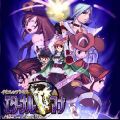Atelier Iris: Eternal Mana
Atelier Iris: Eternal Mana (イリスのアトリエ エターナルマナ Irisu no Atorie Etānaru Mana) is the 6th core Atelier game and the first in the Iris Saga.
Atelier Iris is the first game within the series to be localized outside of Japan, and was released to North America, Europe and Australia.
Entries
You can find other entries of the game here: Atelier Iris
Plot
The game follows the young alchemist Klein Kiesling, who is travelling to learn more about alchemy together with his friend, the Wood Mana, Popo. One day, he is saved from a monster by Lita Blanchimont, a young Galgazit, monster hunter. Lita eventually recruits him to become an Galgazit as well, and they start working together in the town of Kavoc. However, Klein is soon caught in many troubles, and eventually becomes involved in a quest of saving both the world and Lita.
Alchemy in Regallzine
- See Item List (Atelier Iris) for a list of materials and recipes
Alchemy in Regallzine is not as wide spread as alchemy in most of the other Atelier titles. Alchemists are now rare and often focus their studies on the legendary city of Avenberry or on the alchemist Iris Blanchimont, who lived before Avenberry's fall. Those who don't study Iris or Avenberry wander the world, seeking ancient recipes and artifacts for synthesis. From a gameplay perspective, Alchemy is divided into two categories: Mana Items, created with the aid of spirits called Mana and normal item creation, such as cooking or preparing explosives. In order to craft items with the power of Mana, an alchemist must break items, such as stones and barrels, into base elements to draw from.
Characters
| |||||||||||
Music
The soundtrack was composed by Akira Tsuchiya, Ken Nakagawa & Daisuke Achiwa and was released May 19, 2004 in Japan by TEAM Entertainment.
Opening Song
- White Night Illusion (Byakuya Gensoutan / 白夜幻想譚) by Haruka Shimotsuki
Ending Songs
- Walking Path (Ayumu Michi / 歩む道) by Mami Horie (Normal Ending)
- Silent rhyme by Mami Horie (True Ending)
Other Media
Novels / Manga
- Atelier Iris: Eternal Mana (Novel), A novel-based adaptation of the game's story published by Square Enix.
- Atelier Iris: Eternal Mana (Famitsu Comic), A serialised full-colour comic released in Famitsu issues.
- Atelier Iris Eternal Mana Yonkoma Carnival, A Yonkoma comic published by Koei Game Comics.
- Atelier Iris: Eternal Mana ~Setting Off~, a full-colour Manga/Comic contained within the May 28th 2004 (Vol.382) edition of Softbank's "The Playstation 2" magazine.
Audio
- Atelier Iris ~ Eternal Mana ~ Soundtrack Book, a booklet including concept art, lore and a CD containing remixed tracks from the game. It also contains a 5 page full-colour comic, authored by Yuuki Hidaka.
- Atelier Viola: The Magician of Regallzine, A drama CD focusing around Veola and also starring characters from Atelier Iris 2: The Azoth of Destiny.
Mobile
- Several themed wallpapers and ringtones were released for Japanese feature phones following the release of the game.
Trivia
- A few unused images from the game's ROM seem to indicate that it at some stage included a Horoscope function, likely at the title screen; it appears to be entitled "Faith's Horoscope".
- Veola originally would teach the player runes which actually correspond to the fantasy language spoken in the opening theme, White Night Illusion and the track Eternal Eyes; it appears they were also reused for the track Truth from Atelier Iris 2: The Azoth of Destiny.
- These runes displayed are in 'Elder Fulthark', one of the earliest runic alphabets that was often used in what is now Germany; this coincides with a large amount of German words used throughout Eternal Mana and the Atelier series.
- There was also intended to be a feature entitled Movie Bonus Theater but only the image of this remains in the ROM
- Several unused frames are also included in the ROM, as well as a screen-capture showing some of the software that was used to animate the intro cinematic.
- On the official Japanese website of the game, there was a section where staff who worked on the game would submit their own illustrations as mini blog posts. Many of these parody the designs and writing of the characters, and one expresses the pain of having to work with a large spreadsheet that contained all the dialogue lines.





































